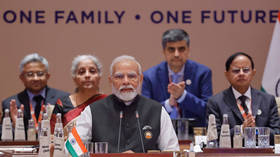By Naveed Ahmed
INS CHAKRA, a nuclear submarine, was formally inducted into the Indian Fleet at VISHAKAPATNAM, Headquarters of Eastern Naval Command, by the Indian defence minster Mr AK Antony on 4 April 2012. This event could have taken place two years earlier but for the accident onboard the vessel during her sea trials in the Sea of Japan the entire project got delayed by at least two years.
How does induction of INS CHAKRA affect the naval balance in the Indian Ocean particularly when viewed in a regional perspective? Since INS CHAKRA is not carrying ballistic or cruise nuclear missiles onboard as such the parity with Pakistan in the strategic realm does not alter drastically, this is a point which needs to be correctly understood. However with the induction of the SLBM (Submarine Launched Ballistic Missile) carrying nuclear submarine, INS ARIHANT, likely to be inducted by end 2012, the strategic balance would definitely be altered. The presently inducted INS CHAKRA is an SSN submarine, whose strength lies in her ability to maintain almost unlimited sustained submerged covert presence in the Area of Interest either for reconnaissance or to undertake sea denial operations with the capacity to do high speeds of up to 30 knots, thanks to the unlimited power generated by its nuclear reactor.
Before examining other issues it is important to understand what constitutes a “Threat”. It comprises “Capability and Intent”. “Capability” is permanent and is achieved over a long period of time whereas “Intent” is transient and can change overnight. Put simply “Capability” has a predominant role in defining the “Threat”. Induction of INS CHAKRA should be examined in the perspective of “capability”, as it has given India an unprecedented offensive capability generating a pronounced threat for all the stake holders in the region.
Let’s take a look at the affects of INS CHAKRA (SSN) on the Indian Ocean Region called IOR. This region extends from Australia in the East to South Africa in the West. It links the world through most important straits including Straits of Malacca, Hormuz, Bab-al-Mandab and the Mozambique Channel. Leading economies of the world including China, Indian, Japan, and Australia are excessively dependant on these passages, also called “Choke Points”. The ports of Indian Ocean handle about 30% of the world commerce. The trade flowing through Indian Ocean comprises 80% for extra-regional and 20% for intra-regional countries. Half of the world containerised traffic traverses through Indian Ocean. It is also home to the largest number of “Failed” or “Failing States” on the Foreign Policy Index. Three Nuclear powers (one potential) are poised perilously close to each other with simmering intra and extra regional conflicts making it the world’s most volatile region.
Starting from the East, lets examine how it affects Australia, which has the longest coastline of 36,000 km, second largest continental shelf and fourth largest EEZ with economy totally dependant upon sea. Potential presence of an SSN, capable of
covertly monitoring and interfering with Australian SLOCs (Sea Lines of Communications) in a conflict situation will definitely make Australian maritime thinkers uncomfortable. Looking at South East Asia comprising some of the emerging economies like Malaysia, Singapore, Thailand and Indonesia, whose total economic growth is dependant on free flow of trade are already under the influence of growing Indian maritime military capability. The establishment of the Joint Command at Andaman & Nicobar Islands overlooking the Straits of Malacca has already squeezed vital strategic space from them. The enhanced threat in the form of INS CHAKRA would make these nations even more wary of Indian presence perilously close to their strategic interests.
On the other hand, South Asian countries are already suffering at the hands of an excessive Indian presence in Indian Ocean, almost all countries including Pakistan, Bangladesh and Sri Lanka have/had some disputes with India in the maritime domain. This enhanced threat of covert presence of an SSN would add to the security concerns of these nations. GCC countries and Iran whose economies are totally dependant on free flow oil supplies to the world would definitely feel threatened as potential covert and sustained presence of an Indian naval platform right at the mouth of the Gulf in their strategic core area would alter their security calculus. Particularly, Iran would be more concerned due to growing Indo-US nexus and what role can Indian Navy potentially play in case of a conflict at sea.
On the African continent, the countries neighbouring the Indian Ocean are already bogged down with their woes of almost failing economies and are constantly suffering at the hands of Somalian piracy. In the south, the strategic location of South Africa joining the Indian to the Pacific Ocean around the Cape of Good Hope is heavily dependant on maritime trade for its prosperity and well being. An enhanced presence of covert Indian platform close to its strategic areas generating potential threat, hitherto not possible, will be a cause of concern for South Africa.
The most affected of all the nations is China whose economic security particularly her energy security is totally dependant on the SLOCs passing through Indian Ocean, therefore Chinese maritime interests in the Indian Ocean are being directly threatened, more than yesterday. As a natural outcome China would adopt measures to protect its interests in the Indian Ocean resulting in increased presence of competing military powers for safeguarding their interests; thus possibly more militarisation and instability in the Indian Ocean. This therefore goes counter to the economic and strategic interests of the countries located in the Indian Ocean Region.
Similarly, France which is maintaining a permanent military presence in the Indian Ocean for safeguarding her overseas interests in La Reunion and Mauritius may not be totally at ease with the introduction of an enhanced (additional SSN) military capability in the security calculus of Indian Ocean. Though the Indo-US nexus in the Indian Ocean has grown over the years however US would not allow an unbridled capability enhancement of the Indian maritime military capability particularly through the Russian conduit. In any case, the Indian SSN is a direct and potent military threat to the American Carrier Groups permanently stationed in Indian Ocean and Gulf, which US military planners can ill afford to ignore in the short and long term.
So what is to be done? The response to this exponentially growing military threat has to come from within the Indian Ocean Region countries particularly those, whose permanent interests are at stakes due to this unprecedented Indian naval expansion. The countries of Indian Ocean Region must unite their voices and exert pressure on India at all international forums through diplomatic and other means to curtail an un-justified and hegemonic Indian naval expansion jeopardising the regional and maritime strategic stability. Countries like Australia, South Africa, Malaysia, Singapore and Saudi Arabia must use their international stature and clout to curtail Indian hegemonic designs. Response from countries like Pakistan, China and other directly affected countries including Iran would be but natural and morally justified, but the resultant affects would not serve the long term interests of Indian Ocean countries.





